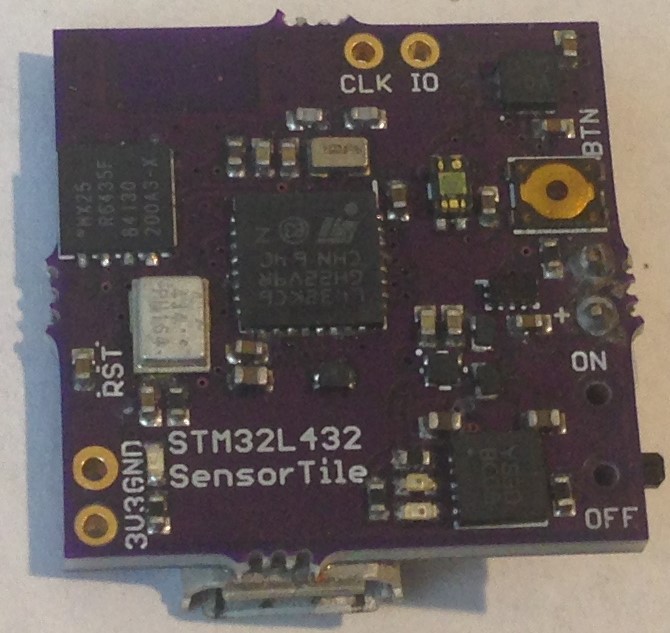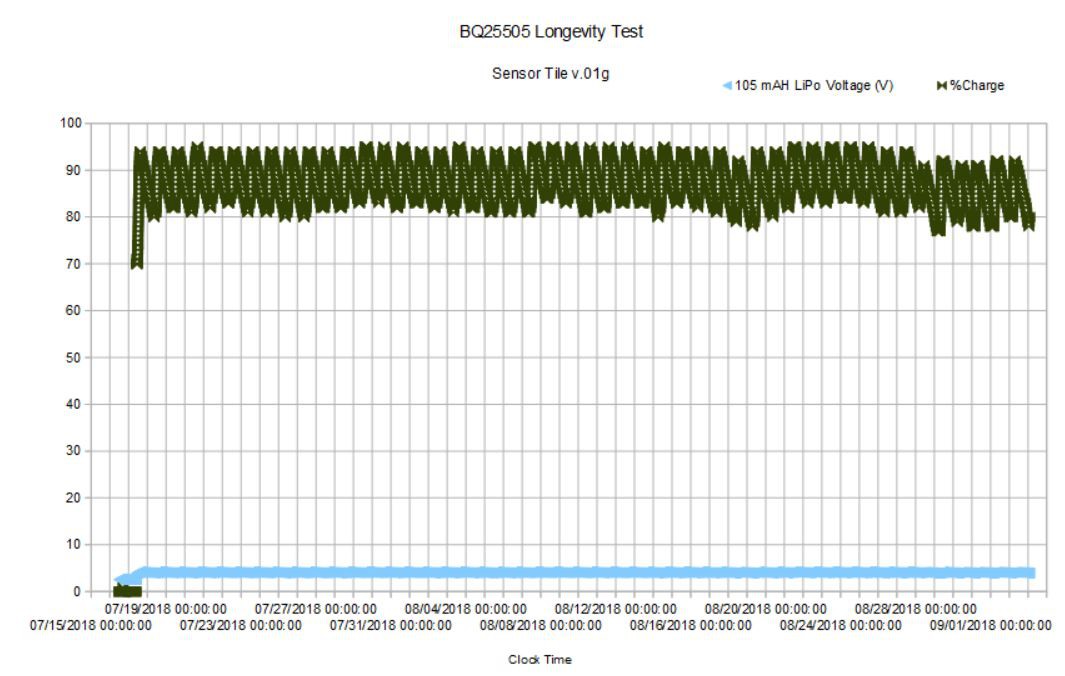09/15/2018
I've been running the Sensor Tile v.01g (my workhorse for environmental data logging testing) powered by a 105 mAH 1S LiPo battery which is charged every day for about four hours by the BQ25504 solar charger connected to a small (30 x 50 mm) a-Si solar cell (see previous logs).

The idea in the latest test was to just let the device run and see whether the BQ25504 can keep the LiPo battery charged for months while the Sensor Tile collects data (pressure, temperature, humidity, air quality, etc) every minute and stores the data to the onboard SPI NOR flash. In other words, can one really use the BQ25504 for long-term environmental data sensing/logging?
And here is the answer:

The experiment started on July 16. For the first day the data seems to be corrupted for some reason. Maybe I forgot to erase the SPI flash when I was testing the Sensor Tile prior to deploying it, I don't know. Anyway, on July 17 the charge state of the LiPo battery starts at ~70% and from then on remains in a band between ~75% and ~95% depending on whether the sun just "rises" (starts shining) on the solar cell (~75%) or the sun has just "set" on the solar cell (~95%).
The data in the plot end on September 4, the actual data continue until September 5 at 19:48 when the SensorTile stopped as the humidity reached 99.9%. The device was exposed to the elements in a glass jar and the solar cell got a little dusty but all of the connections look fine, although the insulation on the wires is a little sun faded. But I have seen this kind of behavior before, when the BME280 humidity sensor gets saturated at 100% the SensorTile shuts down, probably due to a short in the BME280. So, the solution to this problem is using a proper container (see last log).
I will simply claim that barring this humidity problem, the SensorTile would have continued to function essentially powered by the sun as long as the sun covered the solar cell for a few hours per day.
 Kris Winer
Kris Winer
Discussions
Become a Hackaday.io Member
Create an account to leave a comment. Already have an account? Log In.